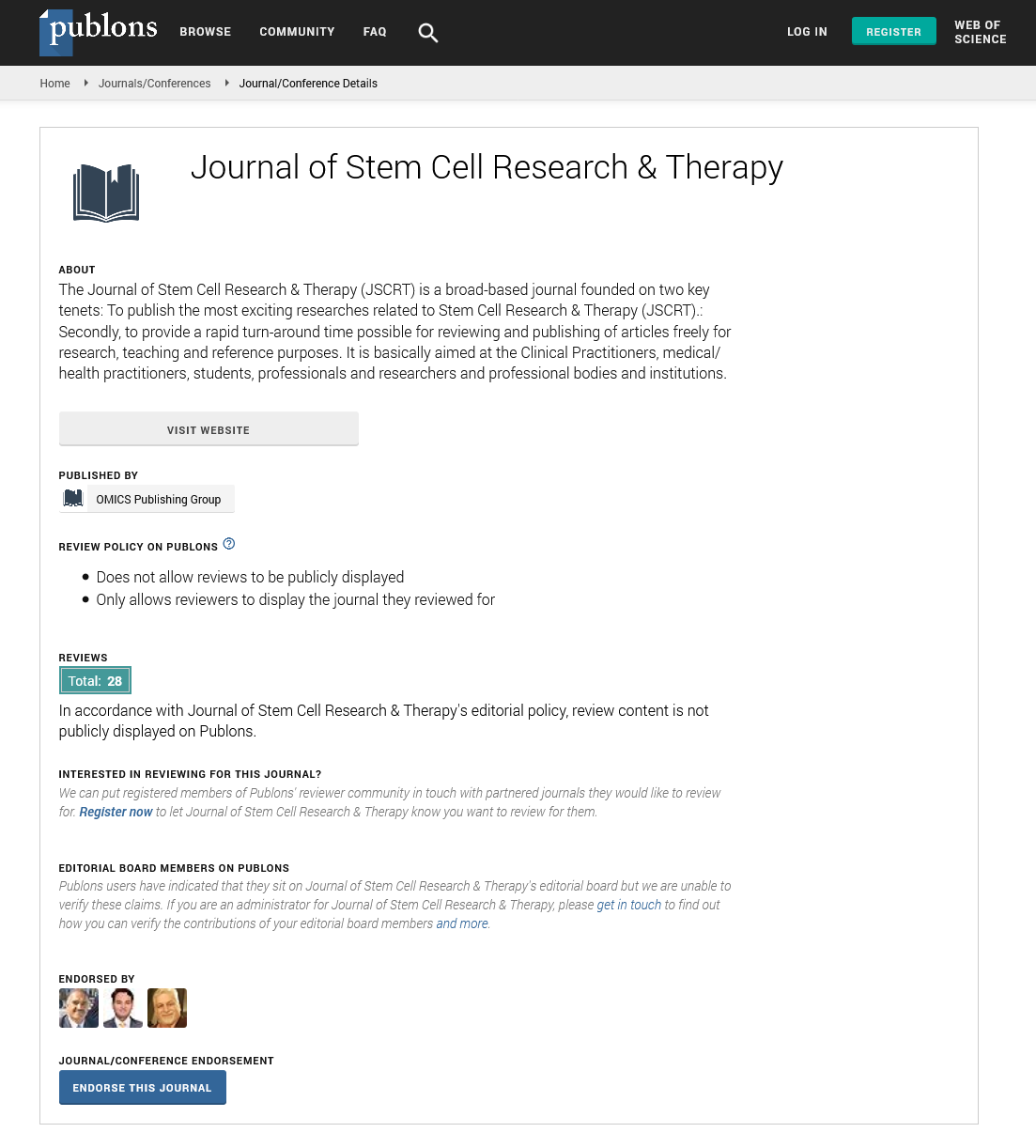Indexed In
- Open J Gate
- Genamics JournalSeek
- Academic Keys
- JournalTOCs
- China National Knowledge Infrastructure (CNKI)
- Ulrich's Periodicals Directory
- RefSeek
- Hamdard University
- EBSCO A-Z
- Directory of Abstract Indexing for Journals
- OCLC- WorldCat
- Publons
- Geneva Foundation for Medical Education and Research
- Euro Pub
- Google Scholar
Useful Links
Share This Page
Journal Flyer

Open Access Journals
- Agri and Aquaculture
- Biochemistry
- Bioinformatics & Systems Biology
- Business & Management
- Chemistry
- Clinical Sciences
- Engineering
- Food & Nutrition
- General Science
- Genetics & Molecular Biology
- Immunology & Microbiology
- Medical Sciences
- Neuroscience & Psychology
- Nursing & Health Care
- Pharmaceutical Sciences
CRISPR logic circuits for next generation CRISPR-based gene therapies
5th International Conference and Exhibition on Cell and Gene Therapy
May 19-21, 2016 San Antonio, USA
Samira Kiani
Arizona State University, USA
Scientific Tracks Abstracts: J Stem Cell Res Ther
Abstract:
Cas9 is an RNA guided DNA endonuclease of the bacterial Clustered Regularly Interspaced Short Palindromic Repeat (CRISPR) system that has been adopted for programmable genome editing and transcriptional regulation. As the complexity of genetic interrogations with this technology is rapidly growing, there will soon be a need for safer and more specific CRISPR-based therapies. To this end, we apply the design principles of synthetic biology to develop genetic logic gates, layered genetic circuits and kill switches, which allow us to exert internal control over the function of the CRISPR system. We develop RNA Pol II driven gRNAs that enable cell and context specific expression of them. This strategy combined with synthetic promoter engineering allow us to develop genetic circuits to have more specific CRISPRs and avoid off target effects. In parallel, we have devised a strategy to readily switch between catalytically active and null Cas9 protein, allowing knocking out and activating target genes in the same cells using distinct gRNAs. By truncating the gRNA from 5â?? end, we have shown that gRNAs with 14nt guide sequences ablate the nuclease activity of Cas9, while leaving its DNA targeting capacity intact. By fusing a Cas9 nuclease protein to a potent activation domain, VPR or application of gRNAs with MS2 binding loops, we can use a same Cas9 protein for transcriptional activation (14nt gRNAs) or gene disruption (20nt gRNAs). By incorporating this capacity within our layered circuits, we have developed and tested several synthetic gene kill switches that can modulate the transcriptional activity of Cas9 protein. Considering the growing clinical application of DNA-based gene therapies and vaccines, the developed CRISPR logic circuits pave the way towards developing safer and more specific gene therapies and allow us to perform more sophisticated biological discoveries.
Biography :
Samira Kiani is an Assistant Professor in the school of biological and health systems engineering at Arizona State Univeristy. She completed her Postdoctoral training in the center for Synthetic Biology at Massachusetts Institute of Technology, where she worked on developing synthetic gene circuits to reprogram the function and behavior of mammalian cells based on the Clustered Regularly Interspaced short Palindromic Repeats (CRISPR)/Cas9 technology. Her lab is interested in developing synthetic gene circuits using the Cas9/gRNA engineering strategies to edit/modulate endogenous genes or transgenes in human cells towards reprogramming cellular fate/function.
Email: samira.kiani@asu.edu

